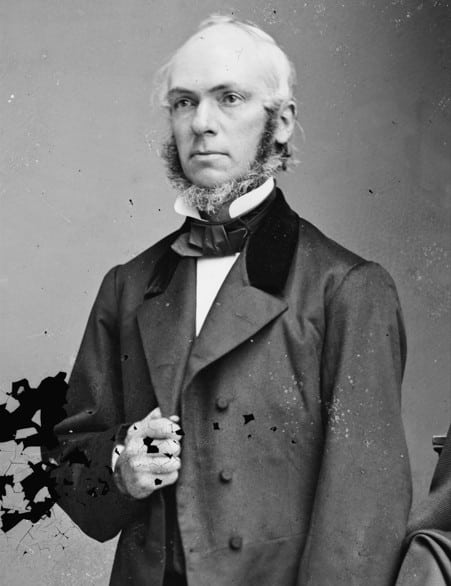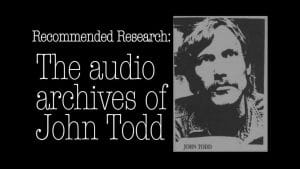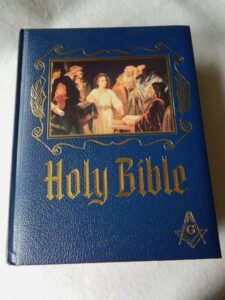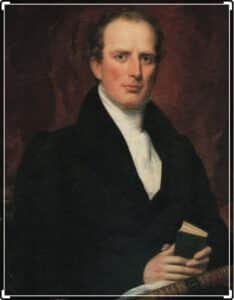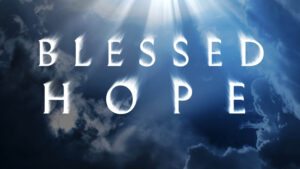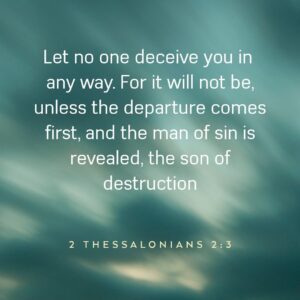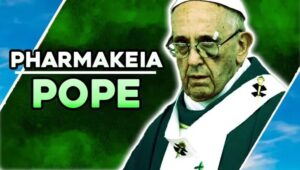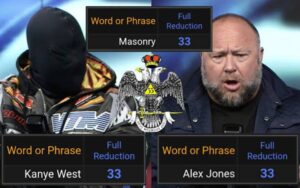Freemason James Strong was the creator of Strong’s Exhaustive Concordance of the Bible. What were his beliefs? What’s their goal? Why there are better Bible study resources than Strong’s.
Eindtijdnieuws.com
March 26, 2025
https://eindtijdnieuws.com/eindtijdnieuws-websites-vertalen-op-pc-smartphone-en-tablet-in-2025/
James Strong was born in 1822 and died in 1894. He was a Methodist who believed in infant baptism and *universalism, and much more. He was not only the creator of the Strong’s Concordance.
He was a member of the Revised Version committee in 1881. The Revised Version uses the corrupt Westcott and Hort text. Westcott and Hort believed that the Vaticanus and Aleph manuscripts, which were Roman Catholic manuscripts, were ‘better’. These two men were heretics that denied the deity of Christ, and along with many more main doctrines.
Strong was also member of the American Standard Version committee. The ASV says the Lord Jesus Christ is a creature, not the Creator in the marginal note for John 9:38 and Matthew 2:2. I could go on and on about how the ASV corrupts doctrines in the Word of God, but you get the picture.
Those two committees consisted of Unitarians (deniers of the Trinity and other major doctrines), such as Joseph Henry Thayer; Bible critics such as Samuel Rolles Driver; and even a child molester by the name of Charles John Vaughan (a Priest).
The definitions of the Strong’s Concordance are often the very words in the KJV, RV, ASV and even the Koran.
Most of Strong’s definitions came from Gensenius’ Hebrew lexicon which is corrupt. Also the corrupt lexicons of Thayer, Brown, Briggs, Driver and Liddell-Scott. Gensenius was called dangerous by Christians. And his definitions and grammar were taken from the conjecture about usages in pagan nations, not from Hebrew. He believed in Subjective Rationalism which is the belief of man’s own ideas, without spiritual revelation from God. Other Hebrew lexicographers say that his works are unscientific, useless, unsatisfactory, superficial and misleading. He believed that a lexicographer must study mythology in order to understand Hebrew words.
So the Strong’s Greek text is not always using the Masonic King James Bible.
Also, the later editions of the Strong’s Concordance are being made to match up with the new versions.
And the Greek and Hebrew definitions in the Strong’s Concordance are often not literal renderings of Greek or Hebrew words.
McClintock & Strong’s Cyclopedia
Strong’s Encyclopedia equates Lucifer with Jesus in Isaiah 14:12, by saying the word ‘Lucifer’ means ‘morning star’. This is impossible because the Hebrew word for ‘star’ is not even used, but ‘son of the morning’:
‘Son of the morning’:
https://biblehub.com/interlinear/isaiah/14-12.htm
Jesus: “I Jesus sent My angel, to testify unto you these things in the congregations. I am the root and the offspring of David, and the bright morning star.” Revelation 22:16
His corrupt encyclopedia also says that there is a ‘happy part in Hades’, and that the literal description of a hell with fire is wrong.
Strong calls the corrupt Vatican Manuscript ‘the most valuable MSS of the Greek testament’! He also recommends Dr. Geddes who was a Roman Catholic.
In conclusion, the definitions in the Strong’s Concordance along with other corrupt lexicons are not really needed and cannot be completely trusted.
Freemasons James Strong and John McClintock
What is the relationship between James Strong, John McClintock and Freemasonry?
James Strong and John McClintock were prominent figures in the 19th century, best known for their collaboration on the Cyclopedia of Biblical, Theological, and Ecclesiastical Literature, a comprehensive encyclopedia on biblical and theological topics. Here are some key points about their relationship to Freemasonry:
-Cyclopedia: Strong and McClintock collaborated on this encyclopedia, which was published in several volumes between 1867 and 1887. This work is often considered an important source for Bible study and theology.
-Freemasonry: There are references to their involvement in Freemasonry, although it is not clear to what extent this involvement influenced their work. This is carefully hidden from us, although the Masonic hand gesture in the image above (the devil’s claw) speaks volumes.
-James Strong’s affiliation with Freemasonry has been the subject of debate. His work and views have been influenced by his involvement with this secret organization.
-Historical Context: At the time of Strong and McClintock, Freemasonry was already an influential social and cultural movement! Their work and network brought them into contact with more Freemasons. Of course, personal memberships remain hidden.
In conclusion, although James Strong and John McClintock made significant contributions to theology and Bible study, their relationship to Freemasonry is complex and not fully documented.
So be aware, when using Strong’s, that you do not allow yourself to be misled. Of course it contains many, many truths, but mixed with some lies and deceptions. Otherwise, no one would use it.
So what is the relationship between James Strong and Freemasonry?
James Strong was associated with Freemasonry, as evidenced by several sources that associate his name with this organization. Although the specific details of his involvement are not extensively discussed on the internet, his relationship with Freemasonry is acknowledged.
James Strong believed in universalism
First, what is *universalism?
Universalism can mean ‘universal salvation, in which all people will eventually be saved and reconciled to God’.
James Strong was an influential American theologian and Bible scholar. He is best known for his work in Bible study and his lexicon. However, he also had views on universalism, a doctrine that holds that ‘ultimately all people will be saved and restored to the grace of God’.
-Universalism and Strong: Strong helped develop and defend the universalist position within Christianity. He believed that the ultimate reconciliation of all people to God was possible, and that this was not just a theoretical view, but an important aspect of Christian theology. Universalism assumes that God is a loving ‘entity’ who does not want anyone to be lost. However, many forget that God, our Creator, is not only loving but also just and righteous.
Strong’s view is unbiblical and dangerous!
James Strong believed in infant baptism, as did Catholics
Strong’s background: Strong was a Methodist theologian, and the Methodist tradition allows infant baptism. This indicates that he supported the practice of infant baptism. And all of the King James Bible translators held to that!
The Bible advocates baptism of believers based on personal profession of faith. First faith, then baptism, not the other way around.
Strong’s can lead to misunderstandings, abuses, and ‘meaning soup’
James Strong’s 1890 Exhaustive Concordance of the Bible is freely available in many places online. So it’s promoted by TPTB (The Powers That Be)! But its dictionary portion is often misused. I humbly offer three reasons why you should use better resources if you can.
1 Strong’s dictionary entries lend themselves to abuses
First, Strong included Hebrew and Greek dictionaries — but nobody ever seems to read the fine print to discover what exactly he was trying to do in his entries. These dictionaries therefore sometimes lend themselves to abuses.
2 Strong’s dictionary entries often tempt people to make ‘meaning soup’
Nor is it a soup of all those meanings mixed together, which you can then pour into other Bible passages. This is a second reason why you should probably replace Strong’s dictionary: people like to make meaning soup with Strong’s. Take the word ‘trust’. The Greek word for trust clearly does not always mean ‘entrust your spiritual well-being to Christ’. How do we know this? Because the demons also ‘believe’ – the same Greek word, but they have not entrusted themselves to Jesus. Dictionaries like Strong’s tend to invite Bible readers to load Bible words with more meaning than the Holy Spirit intended. The context, not the hidden Hebrew and Greek meanings, tells you what level or quality or object of trust is meant.
3 Strong’s dictionary can lead Bible readers into word-study fallacies
Third, Strong’s dictionary sometimes leads unwary readers straight into word study fallacies (several meanings).
The Bible is a self-interpreting book
It is important to test dictionary definitions by the Bible itself. Good dictionaries are very useful, but they are not infallible and must be tested by the Bible itself.
Consider ‘mystery’ (Romans 16:25)
This is the Greek mysterion.
Strong defines it as: a mystery, secret, of which initiation is necessary! What!?
The Bible defines mystery as revelation that was hidden in the Old Testament era and revealed in the New. That is its consistent meaning in Scripture.
So studying Strong’s can be helpful, but can also cause a lot of confusion, because of the cunning Masonic lies, mixed in.
Consider the word ‘bears’ (1 Corinthians 13:7)
This is the Greek stego, which according to Strong’s means:
to cover, to cover over in/with silence, to keep secret; to conceal, to ward off, to hide the errors or faults of others. Strong’s gives as a secondary meaning: to hold out, forbear, bear with, endure. But stego always has the meaning of bearing with or enduring in Scripture, and never has the meaning of covering faults! That’s exactly what some Catholic priests do, and the Pope, and the Illluminati, and so on!
But there is more….
What was Strong’s role in the production of the ASV Bible?
Strong, a prominent member of the Masonic movement, played an important role in the development of the American Standard Version (ASV) of the Bible. Here are some insights:
-Freemasonry and Bible Translations: Strong was part of his fraternity of 101 scholars who collaborated on the ASV. The Masonic movement, of which he was a member, often influenced cultural and religious developments in America, including Bible translations!
– American Standard Version: Published in the early 20th century, the ASV was developed as a response to the King James Version (KJV). This meant that they had to modernize the text without changing the idiomatic expressions and vocabulary of the Masonic KJV.
-Influence of Masonic Brotherhood: Collaboration with his Masonic brotherhood gave Strong the opportunity to work with other scholars, who were also interested in a more authentic rendering of the Bible texts. This highlights the social and intellectual networks often present within Freemasonry.
-Influence on future translations: The ASV had a significant influence on later translations, such as the New American Standard Bible (NASB)!
-Cultural Impact: The ASV has had a lasting impact on Protestant churches in the United States, and continues to be used today. It represents an important step in the ‘evolution of Bible translation’.
In short, Strong’s involvement with the ASV is an example of how religious and cultural movements, such as Freemasonry, can influence important social projects such as Bible translations.
Yes, you heard that right!
See also:
https://eindtijdnieuws.com/eindtijdnieuws-websites-vertalen-op-pc-smartphone-en-tablet-in-2025/
Sources:
3 Reasons to Use Better Bible Study Resources than Strong’s
Strong’s Concordance and James Strong
Glarity

